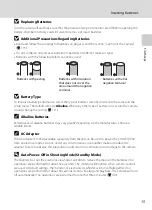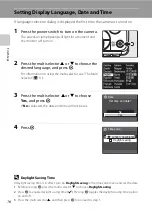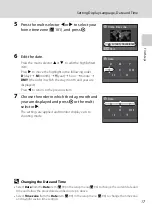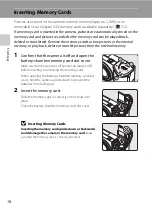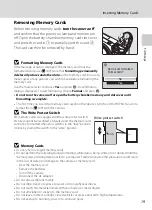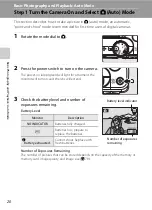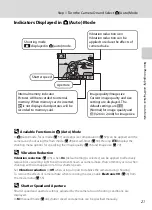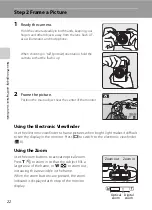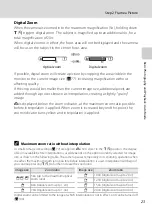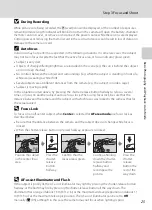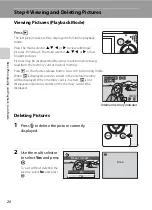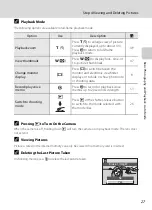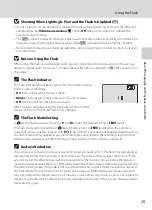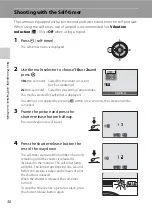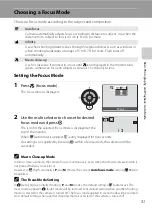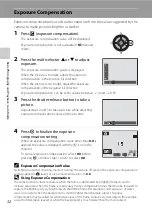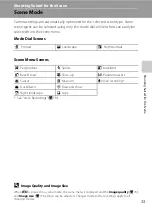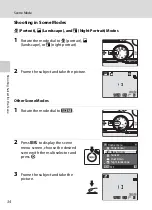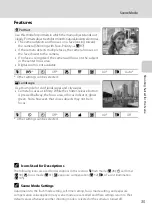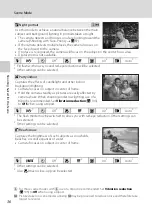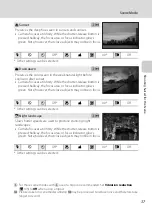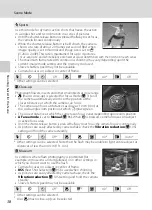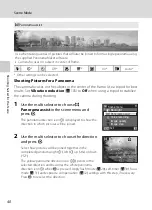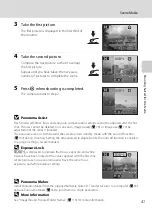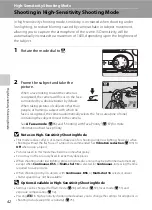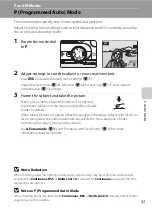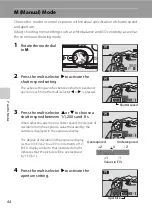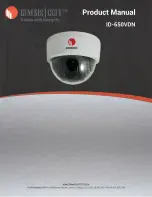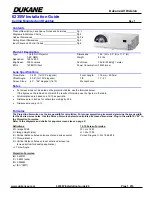
29
Using the Flash
Bas
ic Ph
otography an
d Pl
ayba
ck
: A
u
to
Mod
e
B
Shooting When Lighting Is Poor and the Flash Is Disabled (
W
)
•
Use of a tripod is recommended to stabilize the camera during shooting and avoid the effects of
camera shake. Set
Vibration reduction
(
105) to
Off
when using a tripod to stabilize the
camera during shooting.
•
The
E
symbol is displayed when the camera automatically increases sensitivity to minimize blur
caused by slow shutter speed. Pictures taken when
E
is displayed may be slightly mottled.
•
Noise reduction may be automatically applied as pictures taken are recorded; results in increased
recording times.
B
Note on Using the Flash
When using the flash at a wide-angle zoom position, reflections from dust particles in the air may
appear as bright spots in pictures. To reduce these reflections, set the flash to
W
(Off) or zoom in on
the subject.
C
The Flash Indicator
The flash indicator shows flash status when the shutter-release
button is pressed halfway.
•
On
: Flash will fire when picture is taken.
•
Blinks
: Flash charging. Wait a few seconds and try again.
•
Off
: Flash will not fire when picture is taken.
When pictures are taken using the low batteries, the monitor
displays will turn off until the flash is fully charged.
C
The Flash Mode Setting
In
A
(auto), high-sensitivity shooting,
P
, and
M
modes, the default setting is
U
(auto).
The flash mode setting modified in
A
(auto) mode returns to
U
(auto) when the camera is
turned off, unless a picture is taken with
V
(auto with red-eye reduction) enabled. Adjustments to
the flash mode setting applied in any scene mode are cancelled and these settings return to their
default values whenever another shooting mode is selected or the camera is turned off.
C
Red-eye Reduction
This camera uses advanced red-eye reduction (“In-Camera Red-Eye Fix”). The flash fires repeatedly at
low intensity before the main flash, reducing red-eye. The camera then analyzes the picture; if red-
eye is detected, the affected area will be processed to further reduce red-eye before the picture is
saved. Note that because there is a slight lag between the shutter-release button being pressed and
the picture being taken, this mode is not recommended when a quick shutter response is required.
The time before the next picture can be taken also increases slightly. Advanced red-eye reduction
may not produce the desired results in all situations. In extremely rare instances, areas not subject to
red-eye may be affected by advanced red-eye reduction processing; in these cases, choose another
mode and try again.

